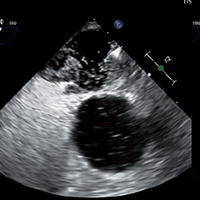Pneumology - Case Reports
Vol. 92 No. 1 (2022)
Platypnea orthodeoxia syndrome in a patient with patent foramen ovale and normal atrial pressure. Case report and presentation of underlying pathophysiological mechanisms

Publisher's note
All claims expressed in this article are solely those of the authors and do not necessarily represent those of their affiliated organizations, or those of the publisher, the editors and the reviewers. Any product that may be evaluated in this article or claim that may be made by its manufacturer is not guaranteed or endorsed by the publisher.
All claims expressed in this article are solely those of the authors and do not necessarily represent those of their affiliated organizations, or those of the publisher, the editors and the reviewers. Any product that may be evaluated in this article or claim that may be made by its manufacturer is not guaranteed or endorsed by the publisher.
Received: 5 April 2021
Accepted: 13 June 2021
Accepted: 13 June 2021
1578
Views
1085
Downloads







